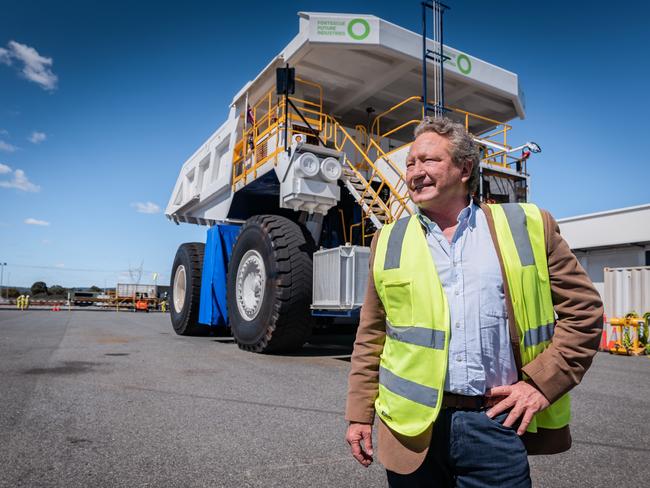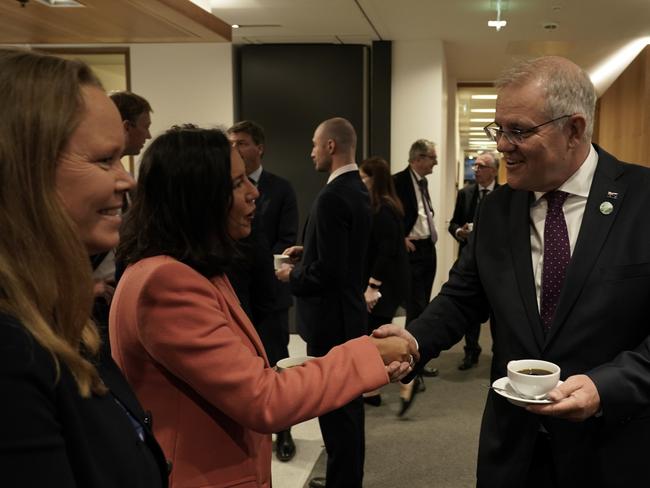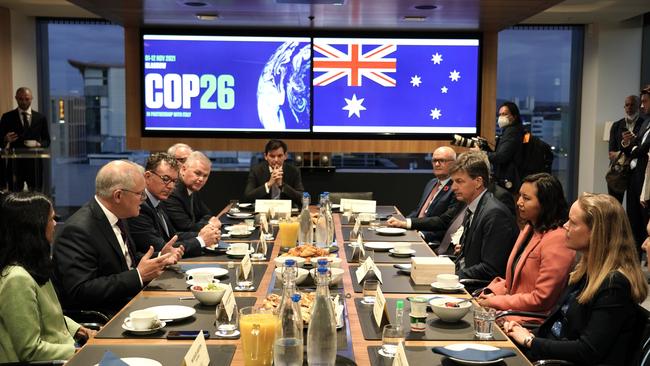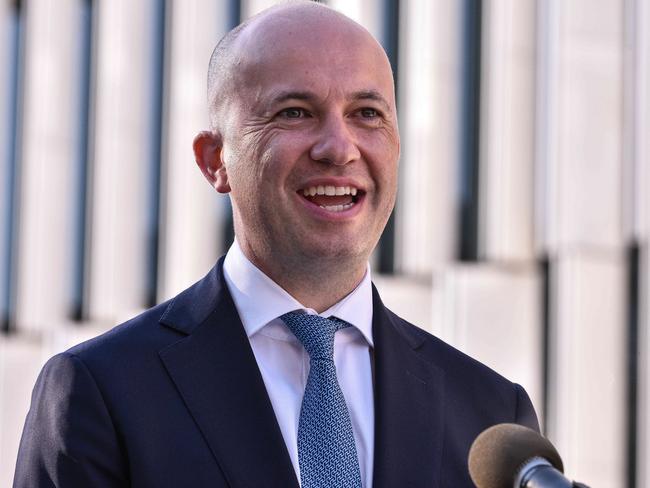Twiggy: Drop fossil fuel subsidies now
Speaking from Glasgow, Fortescue Minerals boss Andrew ‘Twiggy’ Forrest says Australia should drop fossil fuel subsidies to give renewable energy a fighting chance.

Environment
Don't miss out on the headlines from Environment. Followed categories will be added to My News.
Fortescue Minerals boss Andrew ‘Twiggy’ Forrest has called for Australia to drop fossil fuel subsidies in order to level the playing field with emerging renewable energy sources such as green hydrogen.
Speaking from Glasgow, where he is attending the COP26 climate conference, Mr Forrest told the Impact X energy industry online forum that it “makes no sense that we would keep fossil fuel subsidies roaring along”.

Research released by the Australia Institute in April claimed fossil fuel tax breaks cost $7.84 billion in 2020/21 – a sum that exceeded funding for the entire Australian army. Total fuel subsidies cost Australians $10.3 billion that year, the green thinktank found.
Dr Forrest said green hydrogen would be “the biggest industry in the world, without any doubt” but it deserved greater government support.


“It would be extraordinary to push back on something that is going to save humanity,” he said.
“We need a level playing field. We can’t wish something into existence by smashing it in reality, which is what a fossil fuel subsidy does.”
The Minerals Council of Australia (MCA) has defended the fuel tax credits, saying they are vital to regional Australia and to a range of industries including tourism.In an online fact sheet, the MCA argues the fuel tax credit is not a subsidy, “but a mechanism to reduce or remove the incidence of excise or duty levied on the fuel used by business off-road or in heavy on-road vehicles”.
Dr Forrest also pushed back on fossil fuel industry attempts to get into the hydrogen business through so-called blue hydrogen, produced by gas, and brown and black hydrogen, made from coal, on the basis that these processes created more emissions than they saved.
“Blue hydrogen has been around forever and it’s failed just as long,” he said.

Dr Forrest said he had spoken to “a significant handful of presidents and prime ministers” while he was at Glasgow, all of whom wanted to know about the prospects for green hydrogen.
Making a successful economic transition to renewables would be determined “not by who has the greatest hydro, geothermal solar or wind” but by “the quality of the leadership in the coming decade of each country,” Dr Forrest said.
‘AUSTRALIA SHOULD GET TO 700% RENEWABLES’
The Impact X forum kicked off on Tuesday with a bold statement that Australia should become a clean energy superpower and aim for a 700 per cent renewables target by the year 2050.
WWF CEO Dermot O’Gorman was the first of more than 100 experts to speak on day one of the Impact X Forum. Coinciding with the COP26 conference in Glasgow, the event is a showcase for ideas on the pathways needed to get to net zero.
Australia currently sources about a quarter of its electricity from renewable sources such as hydro, wind and solar, but Mr O’Gorman said a 700 per cent target could create $89 billion in export earnings by 2050 and create 395,000 jobs.
This was “ten times more than the current coal sector,” he said.
The states and territories were “already setting their sights higher” and were aiming to become clean energy exporters, Mr O’Gorman said, with Tasmania aiming for 200 per cent renewables by 2040 and South Australia targeting 500 per cent by 2050.
Mr O’Gorman cited a recent Queensland government announcement of a new manufacturing facility for hydrogen electrolysers in Gladstone, saying it had the potential to make the city “a centre of climate solutions for the world”.
Gladstone was either going to be the “tipping point” for renewables investment in Australia, Mr O’Gorman said, “or the tip of the iceberg”.


Business Council of Australia (BCA) President Tim Reed told attendees the “momentum for change is overwhelming” and Australia was “at or moving past the tipping point” already.
Mr Reed said a domestic transition to renewables was a key component of getting to that 700 per cent target, but carbon investment signals were needed to drive action.
Modelling undertaken by Deloitte Access Economics for the BCA showed renewables could account for 35 per cent of Australia’s electricity mix by 2025, 85 per cent by 2030 and 97 per cent by 2040.
Mr Reed said BCA members had suggested a 75 per cent renewables figure for electricity generation by 2030 was more feasible.
“Whatever it is, it’s a dramatic increase from where we are today,” he said.
Using just existing technologies, Australia could source between 46-50 per cent of its overall energy needs from renewable sources by 2030, Mr Reed said.
“Our members, the large electricity generators included, believe this is very possible … we have every asset, every skill and every capability to get there,” he said.

NSW Treasurer and Environment Minister Matt Kean revealed the NSW state government had recently been “swamped” with 80 expressions of interest for projects in its New England Renewable Energy Zone, one of three regions identified in the state as a future hub for clean power.
The zones are “power stations for the decarbonised economy,” and the industry response to the call for expressions of interest “reflects a new consensus,” he said.
“Too often, the climate divide has been between city and country, or old and new industries, or the costs of action versus inaction. In New South Wales, that debate is over. The economics of climate change action are now as compelling as the science, and the benefits largely fall in regional economies,” he said.
The New England projects were estimated to inject $32 billion of private investment to 2030,
and mostly in regional New South Wales, Mr Kean said.
The forum continues on Wednesday, with a speech by Virgin supremo Richard Branson an expected highlight.
More Coverage
Originally published as Twiggy: Drop fossil fuel subsidies now





